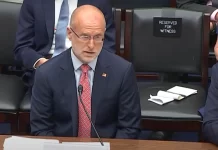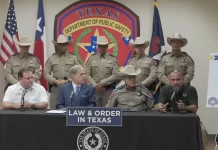Federal Flood Insurance will cost property owners in Louisiana and other states more to cover cost to taxpayers.
(The Center Square) — Owners of 500,000 Louisiana properties covered by flood insurance might not be able to afford coverage with a new approach to the nation’s flood insurance program implemented by the federal government.
The Federal Emergency Management Agency revealed that an estimated 1 million Americans will be unable to afford flood insurance by the end of the decade under the new Risk Rating 2.0 policy implemented this spring as a means to bring solvency to a program that owes taxpayers $20.5 million.
The Associated Press revealed the statistic through a Freedom of Information Request to FEMA.
The new Risk Rating 2.0 “delivers rates that more accurately reflect flood risk and ensure the National Flood Insurance Program will be here for this generation and generations to come,” by changing how the government assesses risk, according to a FEMA fact sheet.
Previously, the program considered a home’s elevation and whether it was within a flood zone, but now calculates distance to water, cost to rebuild and other factors. And for many homeowners in flood-prone areas, it’s the only flood insurance available.
FEMA acknowledges that many will see their rates increase, but had repeatedly downplayed an internal report detailing the potential impact from Risk Rating 2.0, telling the AP a reported 20% of policyholders who would no longer be able to afford the increased rates was “misleading” and “taken out of context.”
FEMA told the AP “there is no study or report to share,” but the results of the Freedom of Information request published Saturday revealed otherwise.
The new rating system went into effect for new flood insurance policies issued on or after October 21, 2021 and for renewing policies on or after April 1.
Both Republican and Democrat congressional lawmakers from numerous states have pushed back on Risk Rating 2.0 by highlighting skyrocketing rates for homeowners in Louisiana and elsewhere and they’ve called on the Biden administration to halt implementation.
In a letter to FEMA Administrator Deanne Criswell in November, U.S. Senators Bill Cassidy, R-Louisiana, and Robert Menendez, D-New Jersey, questioned why the agency was shielding vital information from policyholders about the true impact of Risk Rating 2.0, and demanded answers.
Criswell alleged that without the new system, “hundreds of thousands of single-family homeowners would continue to pay more than they should, equating to collective overpayments of $237 million for a six-month delay and $500 million for a year delay.”
Criswell wrote that 600,000 single-family homeowners received premium decreases with the transition.
A FEMA fact sheet for Louisiana alleges “97% of current policyholders’ premiums will either decrease or increase by $20 or less per month under Risk Rating 2.0” and noted that increases are subject to a 18% per year cap set by Congress for most policies.
FEMA, however, is silent on what the increases could be once the cap is lifted.
“What they’re not telling you is what the rate increase will be in 10 years,” said Ty Bofferding, Cassidy’s communications director. “It’s using information to paint a rosy picture.”
Menendez issued a statement suggesting the AP report “makes it crystal clear that FEMA failed to be transparent with policyholders, Congress, and ultimately the American public.”
Locals in Jean Lafitte recently told WVUE their flood insurance premiums have doubled or tripled, and homeowners insurance companies are following suit with similar hikes. An analysis by The Advocate in February found Risk Rating 2.0 is expected to produce phased-in increases of more than 129% for about half of Louisiana policyholders, while one in 10 will see premiums jump 400%. Another 20% are expected to see one-time decreases of about $960, on average.
In late March, Cassidy joined with U.S. Senators Cindy Hyde-Smith, R-Mississippi, John Kennedy, R-Louisiana, Roger Wicker, R-Mississippi and Marco Rubio, R-Florida to introduce legislation titled the Homeowners Flood Insurance Transparency and Protection Act, which would freeze rates until FEMA addresses concerns about public notice and comment, a premium appeals process, the economic impact, data reliability and submits to an independent peer review.
Cassidy also joined with Kennedy and U.S. Sen. Kirsten Gillibrand, D-NY, in March to introduce a Flood Insurance Pricing Transparency Act to help taxpayers understand the true cost of Risk Rating 2.0.
Last week, Cassidy introduced legislation to reauthorize the National Flood Insurance Program for one year with numerous co-sponsors. The Biden administration, meanwhile, is calling for a 10-year extension with 17 legislative reforms for the program that would cut access to many who need it most.
The Biden administration is asking for the reforms to cut costs in exchange for eliminating the program’s $20.5 million debt to the U.S. Treasury, according to Government Executive.
Originally published by The Center Square. Republished with permission. For more Budget & Tax News.










